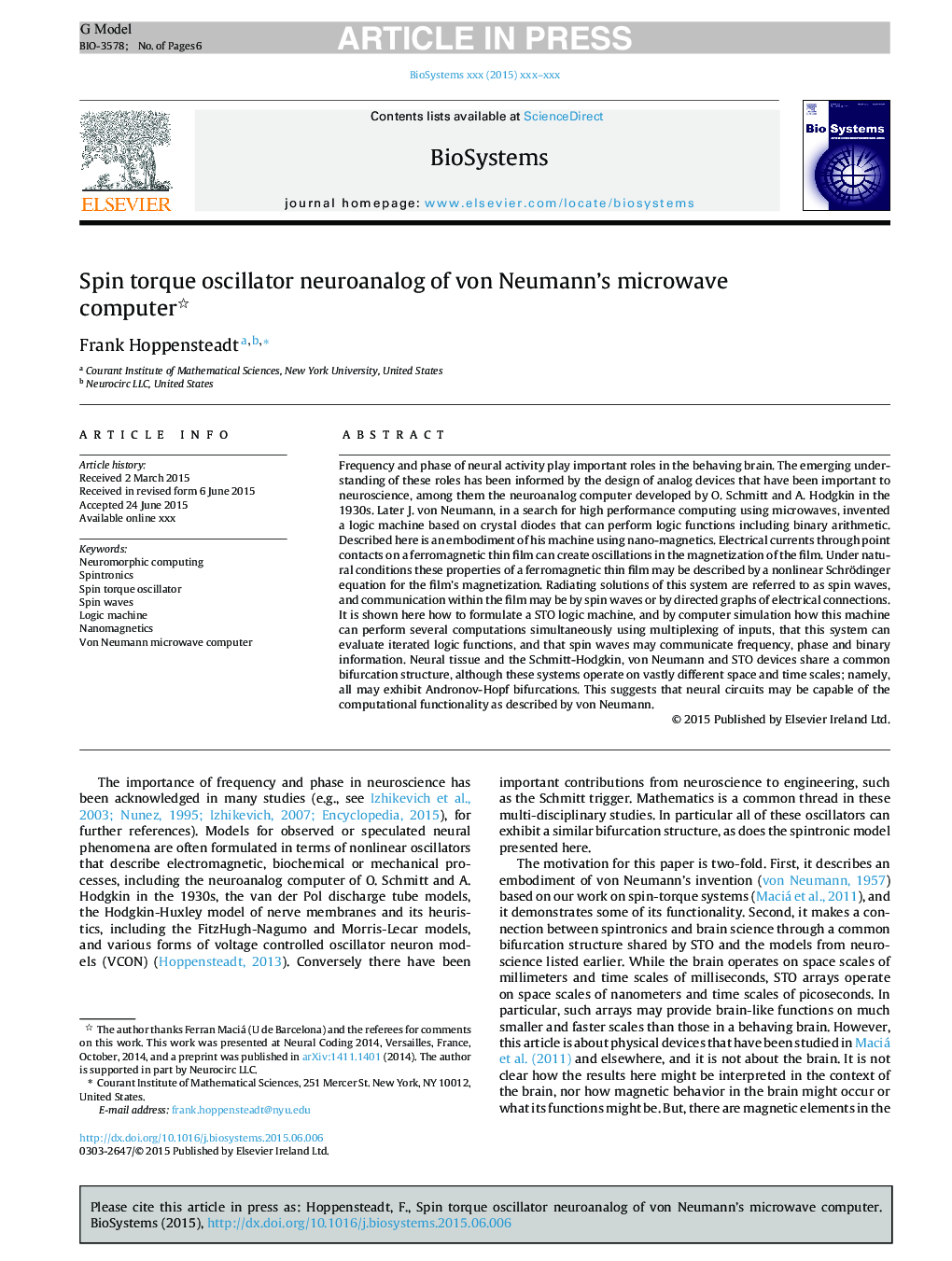| Article ID | Journal | Published Year | Pages | File Type |
|---|---|---|---|---|
| 8407019 | Biosystems | 2015 | 6 Pages |
Abstract
Frequency and phase of neural activity play important roles in the behaving brain. The emerging understanding of these roles has been informed by the design of analog devices that have been important to neuroscience, among them the neuroanalog computer developed by O. Schmitt and A. Hodgkin in the 1930s. Later J. von Neumann, in a search for high performance computing using microwaves, invented a logic machine based on crystal diodes that can perform logic functions including binary arithmetic. Described here is an embodiment of his machine using nano-magnetics. Electrical currents through point contacts on a ferromagnetic thin film can create oscillations in the magnetization of the film. Under natural conditions these properties of a ferromagnetic thin film may be described by a nonlinear Schrödinger equation for the film's magnetization. Radiating solutions of this system are referred to as spin waves, and communication within the film may be by spin waves or by directed graphs of electrical connections. It is shown here how to formulate a STO logic machine, and by computer simulation how this machine can perform several computations simultaneously using multiplexing of inputs, that this system can evaluate iterated logic functions, and that spin waves may communicate frequency, phase and binary information. Neural tissue and the Schmitt-Hodgkin, von Neumann and STO devices share a common bifurcation structure, although these systems operate on vastly different space and time scales; namely, all may exhibit Andronov-Hopf bifurcations. This suggests that neural circuits may be capable of the computational functionality as described by von Neumann.
Related Topics
Physical Sciences and Engineering
Mathematics
Modelling and Simulation
Authors
Frank Hoppensteadt,
